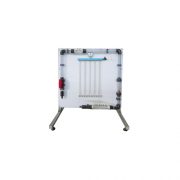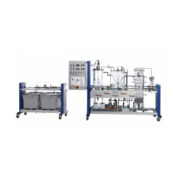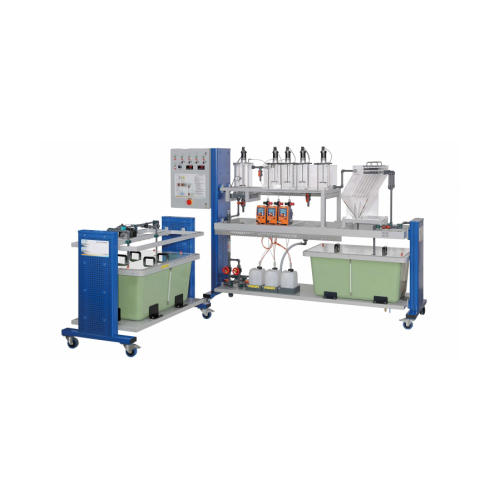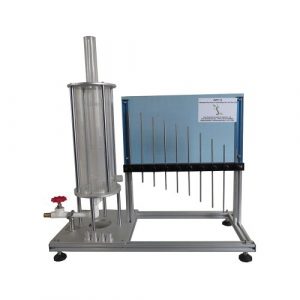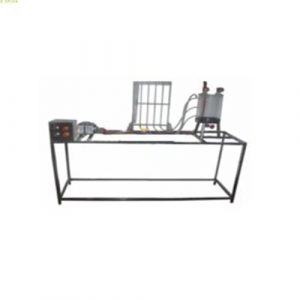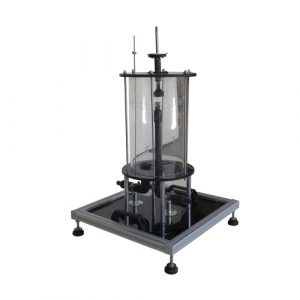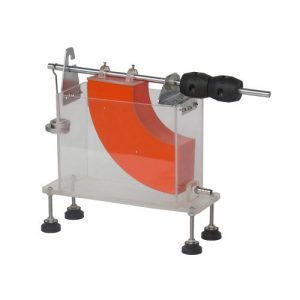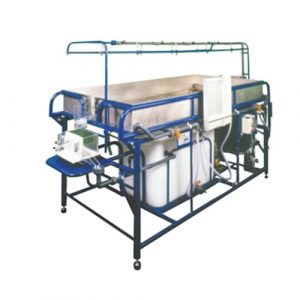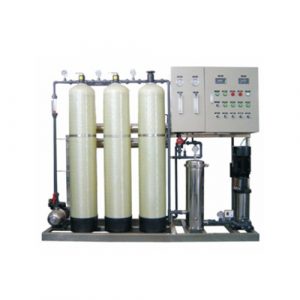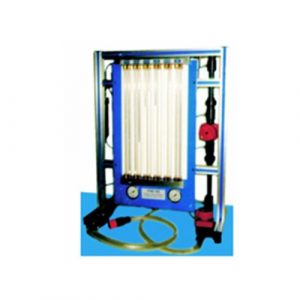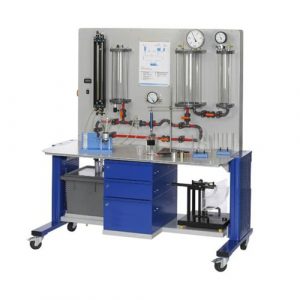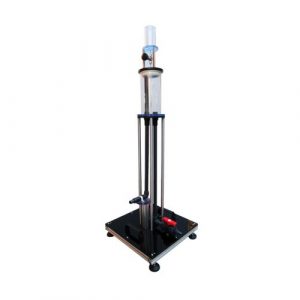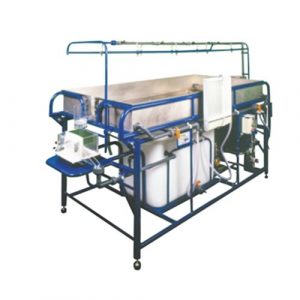- Description
- Inquiry
ZM8137B Flocculation Test Unit Educational Equipment Hydrodynamics Experiment Apparatus
Description
It demonstrates the removal of dissolved substances by precipitation and flocculation with subsequent sedimentation.First, raw water is produced in a tank to contain dissolved metal (e.g. iron). A pump transports the raw water to the precipitation tank. Here the precipitant is added (e.g. caustic soda). Due to the reaction of the dissolved metal ions with the precipitant, insoluble metal hydroxides form (solids). From here the water flows into a flocculation tank divided into three chambers.
The purpose of flocculation is to improve the sedimentation properties of the solids. By adding a coagulant in the first chamber the repulsive forces between the solid particles are cancelled out. The solid particles aggregate into flocs (coagulation). To generate larger flocs, a flocculant is then added (flocculation). In the third chamber low flow velocities are present to prevent any turbulence. Turbulence would impede the formation of flocs. The now well sedimentable flocs are then separated from the treated water in a lamella separator. The treated water and the sedimented flocs (sludge) are collected in two tanks.
Flow rate, temperature and the pH value are measured. In addition, the pH value in the precipitation tank can be controlled. For measuring the conductivity an external meter is available. Samples can be taken at all relevant points. The cover of the tank is transparent for the inspection of the treated water.Analysis technology is required to analyse the experiments. The choice of analysis technology depends on the substances used. Trivalent metallic salts are usually well suited as coagulants. Common flocculants are organic polymers.
Specification
- precipitation and flocculation of dissolved substances (e.g. iron)
- separate supply unit with tank and pump for raw water
- tank cover for raw water and treated water made of transparent material
- precipitation tank with stirring machine
- flocculation tank with 3 chambers and 4 stirring machines
- 3 metering pumps for chemicals
- sedimentation of the flocs in the lamella separator
- measurement of flow rate, temperature and pH value
- control of the pH value in the precipitation tank
- conductivity meter
Technical data
Tanks
raw water and treated water: each 300L
precipitation tank: 10L
flocculation tank: 45L
sludge tank: 15L
Lamella separator
number of lamellas: 6
angle of inclination of lamellas: 60°
Raw water pump
max. flow rate: 180L/h
max. head: 10m
Metering pumps
max. flow rate: each 2,1L/h
max. head: each 160m
Stirring machines
max speed: each 600min-1
Measuring ranges
flow rate: 15…160L/h
pH value: 0…14
temperature: 0…60°C
conductivity: 0…2000µS/cm
230V, 50Hz, 1 phase
230V, 60Hz, 1 phase; 120V, 60Hz, 1 phase
UL/CSA optional
Dimensions and weight
LxWxH: 1550x790x1150mm (supply unit)
LxWxH: 3100x790x1950mm (trainer)
Total weight: approx. 435kg
Required for operation
water connection, drain, iron(III) chloride,
iron(III) sulfate, flocculant, caustic soda, hydrochloric acid



